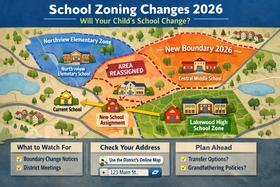The percentage of students achieving proficiency in math was 21-39% (which was lower than the Florida state average of 68%). The percentage of students achieving proficiency in reading/language arts was 11-19% (which was lower than the Florida state average of 62%).
School Overview
School Type
Grades Offered
Grades 9-12
Total Students (13-14)
255 students
Total Classroom Teachers
n/a
School Rankings
Math Test Scores (% Proficient)
(10-11)21-39%
68%
Reading/Language Arts Test Scores (% Proficient)
(10-11)11-19%
62%
Student-Teacher Ratio
n/a
17:1
American Indian
(13-14)1%
n/a
Asian
(13-14)2%
3%
Hispanic
(13-14)69%
30%
Black
(13-14)14%
23%
White
(13-14)13%
41%
Hawaiian
(13-14)n/a
n/a
Two or more races
(13-14)1%
3%
Graduation Rate
(14-15)≤10%
79%
Eligible for Free Lunch (13-14)
60%
52%
Eligible for Reduced Lunch (13-14)
4%
6%
School Statewide Testing
School District Name
Source: National Center for Education Statistics (NCES), FL Dept. of Education
Frequently Asked Questions
What percent of students have achieved state testing proficiency in math and reading?
21-39% of students have achieved math proficiency (compared to the 68% FL state average), while 11-19% of students have achieved reading proficiency (compared to the 62% FL state average).
What is the graduation rate of Challenger Learning?
The graduation rate of Challenger Learning is 10%, which is lower than the Florida state average of 79%.
How many students attend Challenger Learning?
255 students attend Challenger Learning.
What is the racial composition of the student body?
69% of Challenger Learning students are Hispanic, 14% of students are Black, 13% of students are White, 2% of students are Asian, 1% of students are American Indian, and 1% of students are Two or more races.
What grades does Challenger Learning offer ?
Challenger Learning offers enrollment in grades 9-12
What school district is Challenger Learning part of?
Challenger Learning is part of Osceola School District.
Recent Articles

Public School Open House & Enrollment Season Guide for Parents
Learn what to ask at a public school open house during enrollment season, from academics to safety, to choose the right school for your child.

School Zoning Changes 2026: How Assignments May Shift
School Zoning Changes 2026 could affect your child’s school assignment. Learn how zoning works, what is changing, and how families can prepare.

School Vouchers: Updated Pros and Cons (2025 Review)
Comprehensive 2025 analysis of school vouchers, weighing benefits and challenges for families, funding, outcomes, and policy directions.





